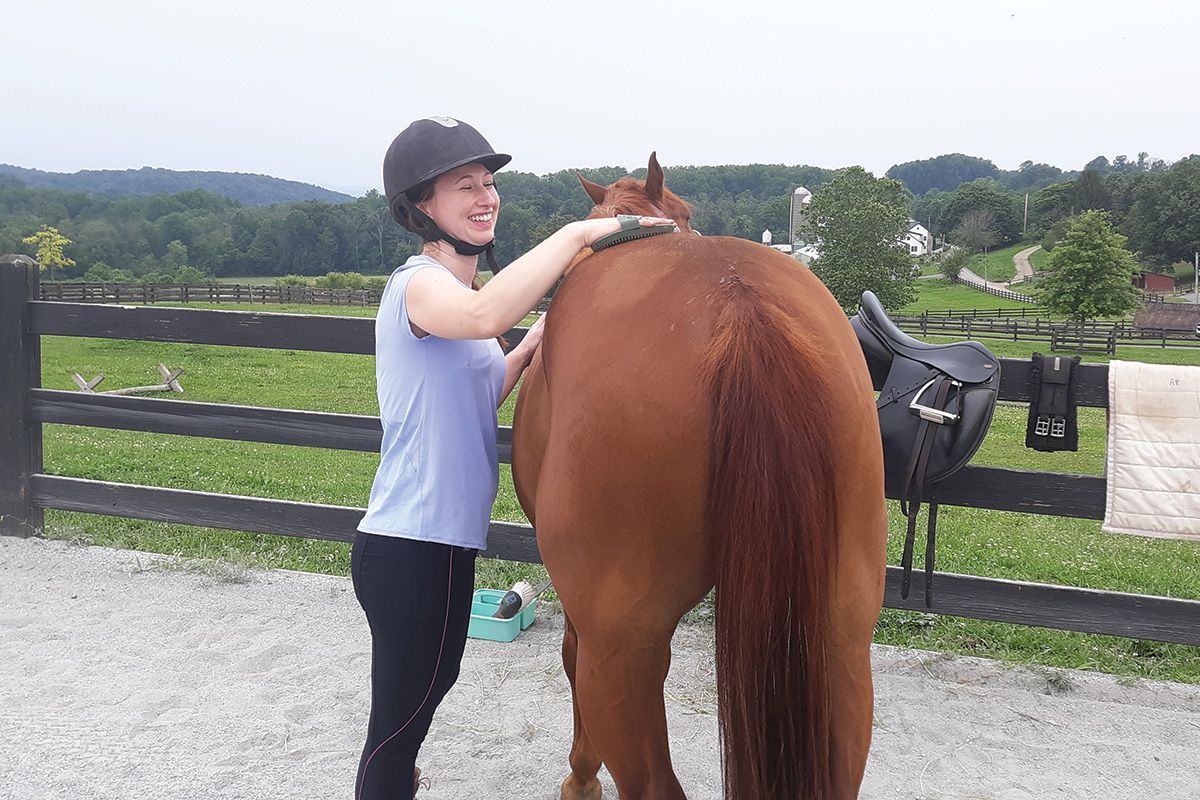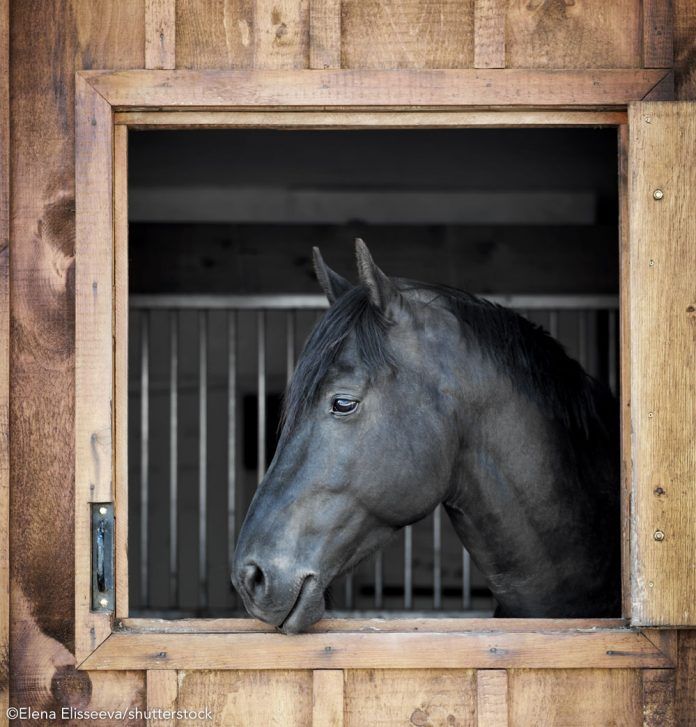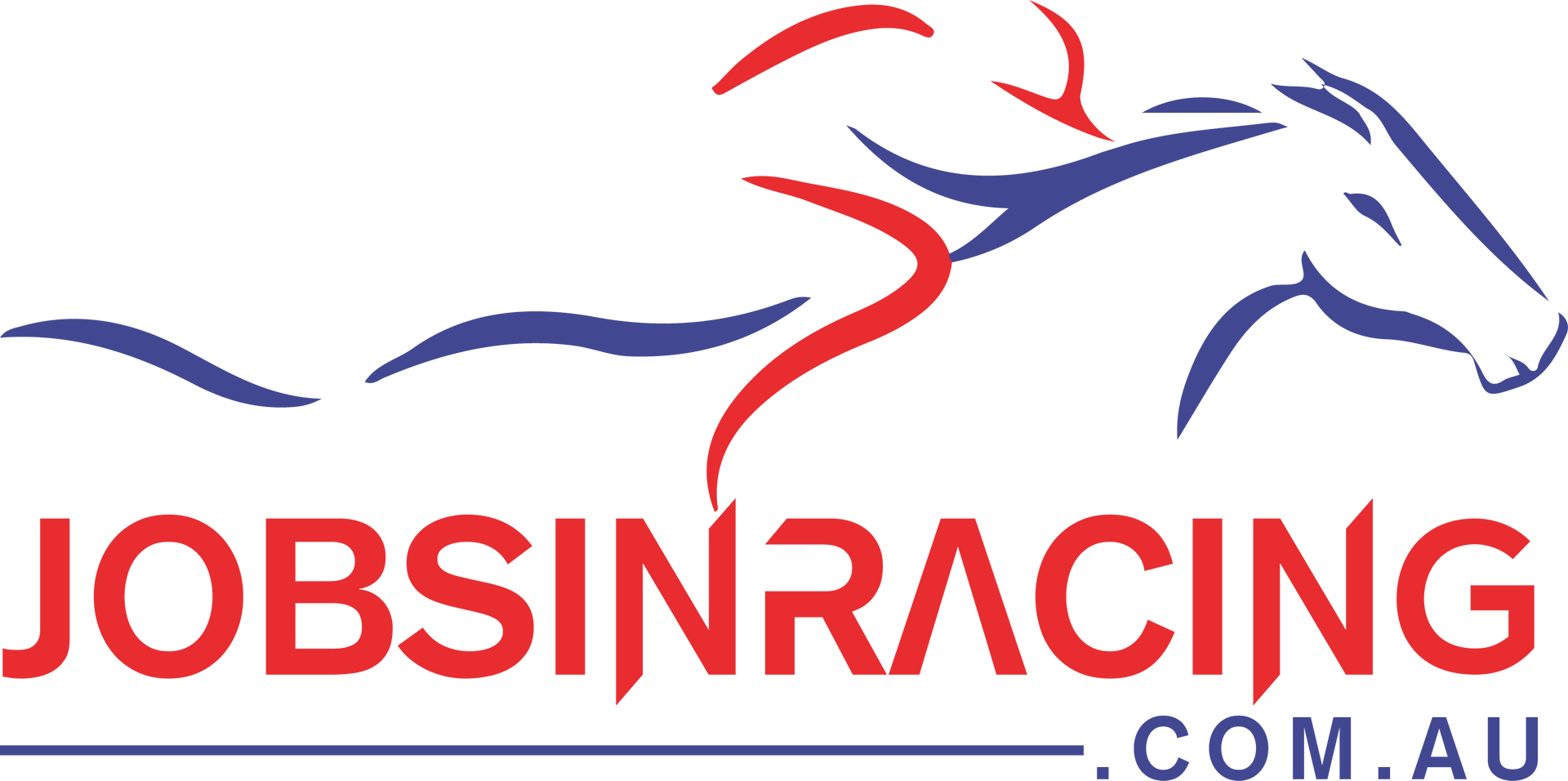Target Your Horse’s Warmup
By targeting your warmup, you can prepare your horse to get the most out of a schooling ride.
A crucial part of preparing your horse for your goals is to keep in mind that he is an athlete. Each training session is a part of the process of gaining fitness, experience, and skills that will help the two of you as a pair build towards those goals. Within each training session, you must have a plan of what you hope to accomplish so that you are consistently moving forward. However, not every ride needs to be (nor should be) a training session. Targeted training sessions should be sprinkled between stretch/light flat days, trail rides, longeing, or whatever else is a part of your program. And at the center of these should be a targeted warmup for your horse.
The average ride in non-extreme heat and humidity should last about 30 to 45 minutes. No matter how much time you have to ride, I firmly believe that the warmup should take the most amount of time. A walk on a long rein followed by some basic trot and canter work on a medium-length rein is a great way to begin.
After that is complete, you can begin the targeted warmup. A targeted warmup is one that you create using critical thinking skills in order to improve on your horse’s specific weaknesses. Some examples of these weaknesses could be crookedness, reluctance to go forward, tension/stiffness, lack of engagement, et cetera.
By targeting the warmup to improve these qualities, you set the tone for whatever you’re hoping to practice during the “work” section of the training session, whether that is a complicated jumping track or more advanced dressage movements. This way, your horse is already engaging the correct muscles and having the correct reactions to your aids before being presented with something more complicated.
Having between three to five exercises to choose from is helpful so that the warmup changes somewhat during each session and avoids becoming a drill.
Useful Targeted Warmup Exercises for Specific Horses
- Horse that drifts or pops out a shoulder:
◆ Square turns or turn on the haunches
◆ Shoulder-fore or shoulder-in
◆ Circles or figure-8s with focus on riding the shoulders
- Lazier type:
◆ Lengthening or collecting of stride
◆ Frequent transitions
◆ Apply leg, use spur or stick if no reaction
- Hotter type:
◆ Downward transitions
◆ Circles or figure-8s on a medium-long rein with a mild inside bend
◆ Ground poles (if he rushes the jumps)
◆ Collecting of stride and transitions from regular to collected gaits
- Stiff horse:
◆ Circles and figure-8s
◆ Mounted carrot stretches after initial stretch warmup when muscles are warm
◆ Shoulder-fore or shoulder-in
◆ Leg-yields
- Horse needing more hind-end engagement:
◆ Transitions on straight lines (with emphasis on even feel in the contact) - ◆ Backing
- ◆ Sets of multiple ground poles or raised cavalletti
- ◆ Circles, figure-8s, and three-track movements (such as shoulder-in and shoulder-fore) with emphasis on encouraging drive through the hind end through half-halts and maintaining impulsion.
Three Skills
There are several important skills at play when designing and executing a targeted warmup.
First, you must understand your horse’s weaknesses (or your weaknesses as a pair) and how to improve them. This could be a great conversation to have with your trainer. Being able to narrow down what may seem like a huge problem to a few tweaks to the basics is a crucial step in becoming a more well-rounded rider.
Having placed the extra attention on these weaker basics during the warmup, you will be a step ahead when you arrive at the “work” portion of your ride. Using relevant exercises, your horse will become physically and mentally engaged in a way that will benefit his work. Rather than getting frustrated when your horse is rushing the jumps or lacking spring in his hocks, now you will notice those problems arising less and less each ride.
Instead of feeling stuck and asking your horse to perform the more difficult work over and over in a futile attempt to fix it in the moment, the proper preparation has been done to ensure success. This also allows you to avoid unneeded wear and tear on your horse, both physically and mentally.
The final component of a targeted warmup that adds value to your overall training regimen is that even if you and your horse are having a difficult time on a particular day, if you stop your ride after your targeted warmup, you will still have progressed a little further towards your goals.
In this masterclass video from Ridely (proceed to the link below), Olympic medalist Meredith Michaels-Beerbaum talks you through how she warms up her horses when she competes. Meredith explains that the most important thing about warming up is that you stay as calm as possible. Competing can be daunting and the warmup ring is often busy with other competitors, so it is important to control the nerves and stay calm. She emphasizes the importance of giving yourself enough time in the warmup and to get on the horse early.
There are plenty of times when things don’t go as planned with horses, but by having identified the skills you need to improve on to get to the next level, no session can ever be considered stagnant.
Source: https://www.horseillustrated.com/target-your-horses-warmup


